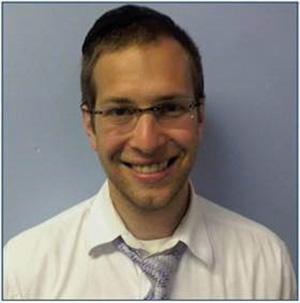
“Potential” is a word that evokes a wide range of responses. Potential can inspire, opening the mind’s eye to endless possibilities. Potential can partner with remorse, producing feelings of regret and memories of lost opportunity. Potential can also produce strong anxiety within an individual; how does one choose a life path (or an item on a restaurant menu) when choice means rejecting other options, each as full of promise as the next? Understanding this multifaceted concept can help provide a healthy perspective about choices we make for our children and students.
In one of the most quoted—and perhaps most mistranslated—pesukim in Tanach, Shlomo Hamelech advises “Chanoch lanaar al pi darko, gam ki yazkin lo yasur mimena.” The most common interpretation of this verse has it as reference to a life of Torah and mitzvot. Teaching children in the right way will keep them on the right path. In this context, the pasuk translates as “Teach a child according to his way, so that when he gets older he will not deviate from [the correct path].”
However, the cleanest explanation of the pasuk may be “Teach a child according to his way, because when he gets older he will not deviate from [that way].” If so, Shlomo Hamelech is providing advice that some might consider groundbreaking: There are parts of each child that will never change. You must take those things into account when teaching. To understand the vast difference between two explanations, let’s take an example:
Almost everyone knows one person between the ages of 8 and 80 who doesn’t take to tefillah. It’s just not “for them.” For many of these people, the extreme discomfort with tefillah is an unavoidable part of their personalities. A person can be a proud Jew who learns Torah and does all the things he or she is supposed to, but puts minimal effort into tefillah. This is not the end of the world. However, many parents and teachers who care about their children and students might be concerned (or even panicked): Is Yosef not proud of being Jewish? Does Sophie not feel a connection to God?
Such concerns will likely lead a role model to take the “classic” approach to chanoch lanaar. The child is in danger of not being on “the derech,” and we therefore must strategize to get this child to change his or her behavior. If this approach is the correct one for the situation, a solution may be found, and we can exhale.
On the other hand, a parent or teacher who attributes the challenge to the child’s personality will likely take the “novel” approach to chanoch lanaar. Panic does not set in because this problem isn’t tied to becoming a disconnected Jew. Anxiety does not rear its head because the behavior cannot change in the near future. Yosef won’t suddenly find the ability to sit still and Sophie won’t suddenly become comfortable with the injustice she perceives in God’s world. In some way, it is what it is.
Although the first approach seems harmless if executed with respect and encouragement, a pitfall does present itself. Children need adult role models who present as understanding where each child is coming from. If a child truly feels that he or she cannot sit through tefillah, and yet somebody is trying their hardest (even in the best way) to get them to, there is a disconnect between the two parties. A more patient approach sends the message that somebody is here for you and understands you. This feeling can do wonders for keeping children connected.
For the sake of making a point, we have oversimplified. Each case is different, and most do not simply fall on one extreme. However, parents and educators would benefit from taking a deep breath and a step back. Not every challenge is a spiritual crisis and some problems are not meant to be “solved.” (The same can be applied to behavioral, social and academic challenges.)
Returning to the concept of potential, this is often why parents and teachers struggle with perspective. Nobody wants to be the one to say “my student just won’t be the davener,” or “I guess my child won’t be the talmid chacham.” Adopting such a view may seem like an amputation of possibility. However, the alternative might be to delay the inevitable. Every child will have to make choices at some point in life. Helping them understand themselves at a younger age will only benefit them in the long run.
So what are parents and educators to do? Here are few pieces of practical advice:
Parents, make a list of each of your child’s biggest practical, educational and spiritual challenges. Think about which of these challenges are most directly impacted by personality. Decide to be more patient and understanding about these. Speak with your children. Tell them what you are doing. Let them know you want to understand where they are coming from (this works with kids as young as 7 or 8).
Morot and rebbeim, be careful with how you phrase things. Not everything in Judaism is going to be “beautiful,” “gevaldig,” “holy” and “amazing,” no matter how inspired you are. It is so important to show your students how much you love being Jewish, but that is not enough. Students who struggle need to have their struggles normalized and their expectations differentiated. Speak with parents. Learn about your students. Let your guard down once in a while.
School administrators, find ways to differentiate curriculum and Jewish experiences. Not every student will be a lifelong Gemara learner, leibidig chagiga dancer or attentive davener. Encourage constructive communication among teachers about their students. Set an example of understanding and empathy for those around you.
There are no easy answers. May Hashem grant us the Solomonic wisdom to do right by each of our children and students.
By Yair Daar
Yair Daar is the assistant principal and mashgiach ruchani at Yeshivat He’Atid. He can be reached at ydaar@yeshivatheatid.org.









